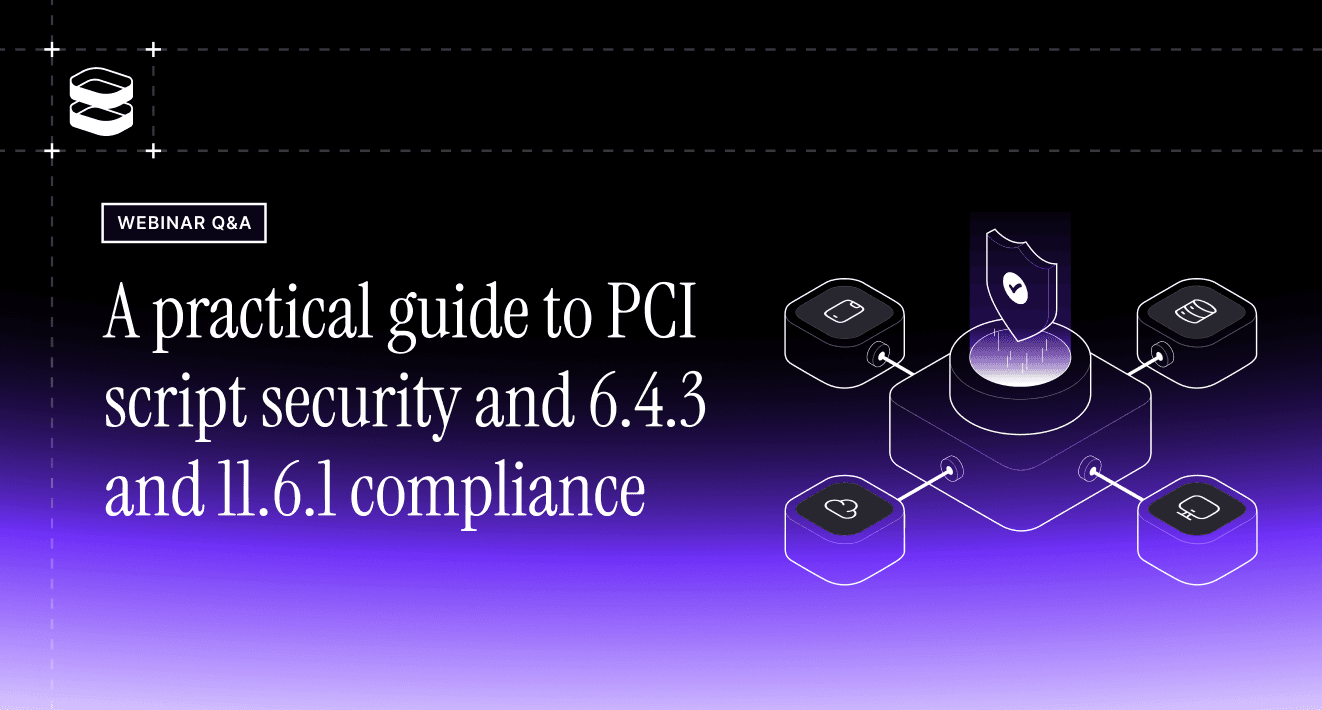ASV Scans: What they are, when you need them, and how they work
Learn what ASV scans are, when you need them for PCI compliance, and how Evervault simplifies the process with a modern, user-friendly solution.


During our webinar, A Practical Guide to PCI Script Security and 6.4.3 and 11.6.1 Compliance, we received a number of insightful questions throughout the presentation. We thought it would be helpful to share them publicly, so we’ve compiled a list of the top 10 questions along with our answers below.
Typically fines—these are determined by the card brands and passed to the acquirer. The acquirer may then decide whether to pass the fines on to merchants. The longer non-compliance goes on, the higher the fines become.
There is no difference really, an iFrame for collecting cardholder data should only ever be served by a Level 1 PCI DSS compliant service provider. Evervault does provide an iFrame but not a Full Page Redirect.
Yes, but they typically rely on a Qualified Security Assessor (QSA) to perform the assessment and sign off on either a Self-Assessment Questionnaire (SAQ) or, in some cases, a full Level 1 Report on Compliance (RoC). Acquirers can issue letters requesting the SAQs. The responses in aggregate are summarised, and reported to the card brands. Card brands then determine whether a given acquirers portfolio is sufficiently compliant. They can then decide to push fines or not.
It depends. For merchants, their acquiring bank contractually requires them to be PCI DSS compliant. For service providers, enforcement typically comes from the card brands or directly from their customers requesting proof of compliance.
For merchants using a 3DS solution, validation to PCI DSS Requirement 6.4.3 for 3DS scripts is not required due to the inherent trust relationship between the 3DS service provider and the merchant, as established in the merchant’s due diligence and onboarding processes, and the business agreement between the entities (PCI FAQ 1581).
The proxy does not alter the script content. However, it analyzes the content and alerts on potential malicious changes. The Evervault dashboard also provides Git-style diffs to track script modifications.
Based on the latest information supplement, it appears that CSP on its own will not be enough, as CSP primarily uses script source for determining whether scripts are allowed to execute or not.
In the absence of SRI and hashes, the other option is monitor script content changes. This is mostly being done by means of dynamic assessment of scripts and changes to scripts. Check out Page Protection for more information.
Some headers, such as X-Frame-Options, are deprecated in favor of CSP directives. Additionally, privacy-focused browsers may limit referrer information regardless of the Referrer-Policy settings.
If you need to understand how to protect your payment pages and manage browser scripts in compliance with requirements 6.4.3 and 11.6.1 of PCI DSS 4.0, this webinar is for you.
Watch the webinar